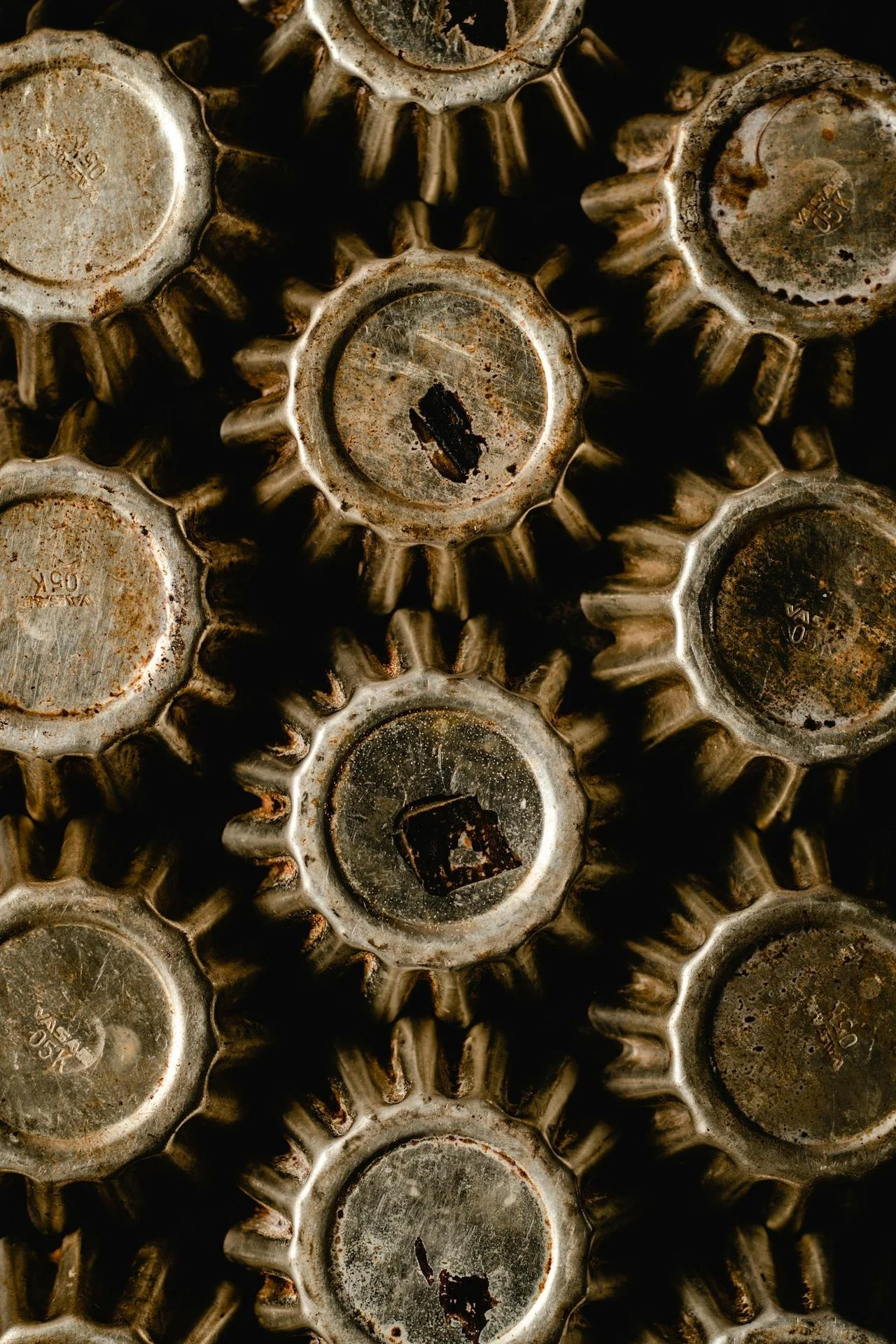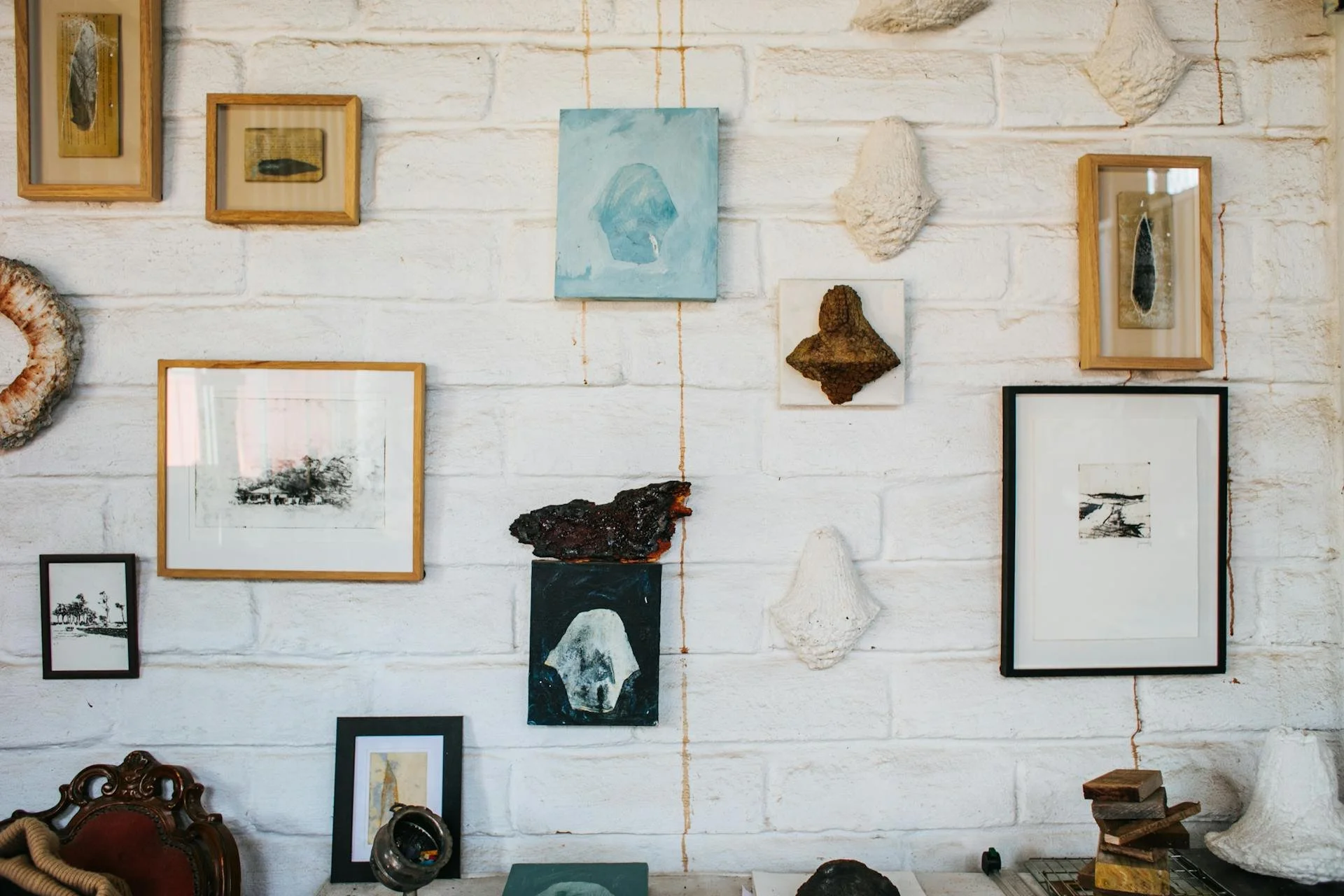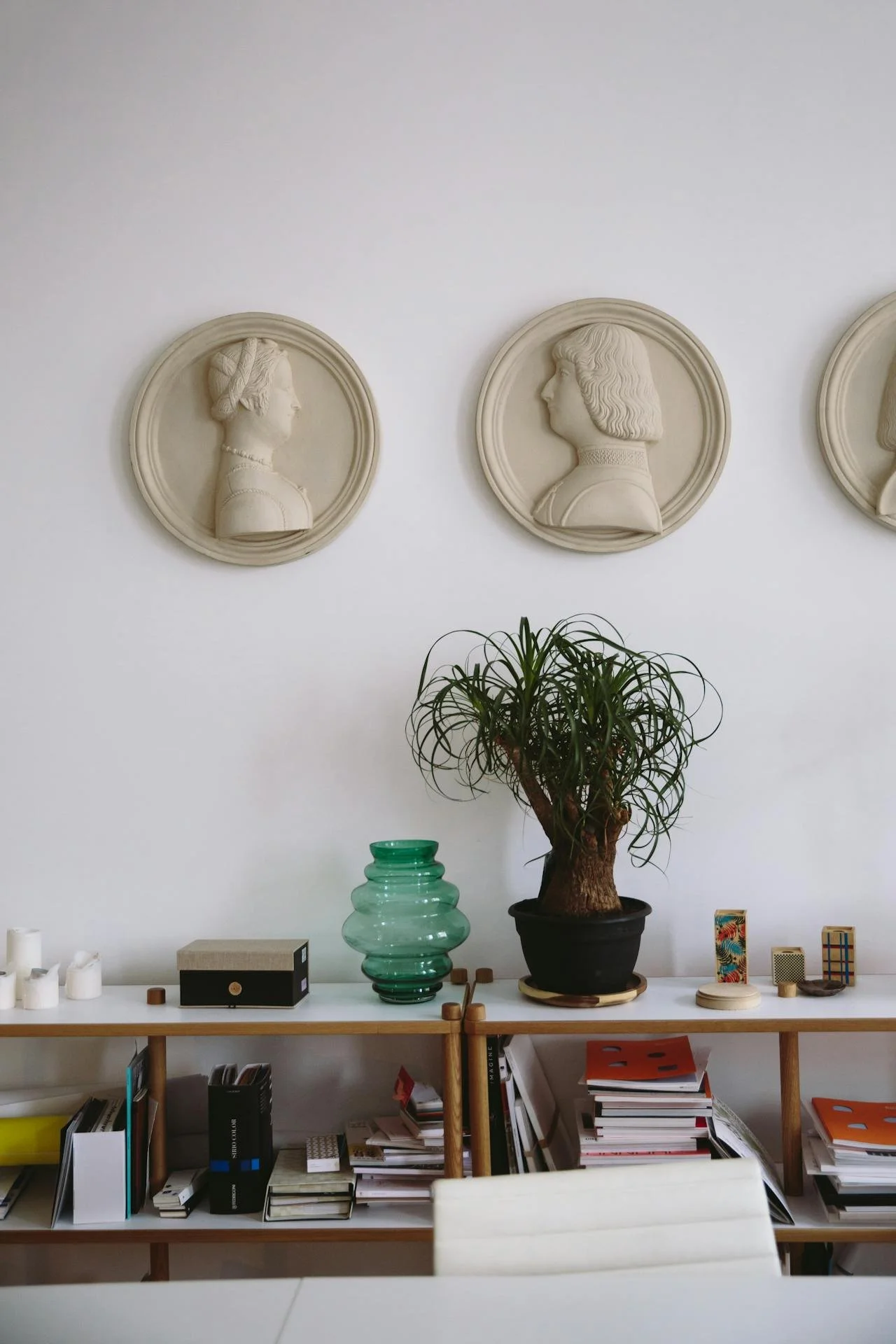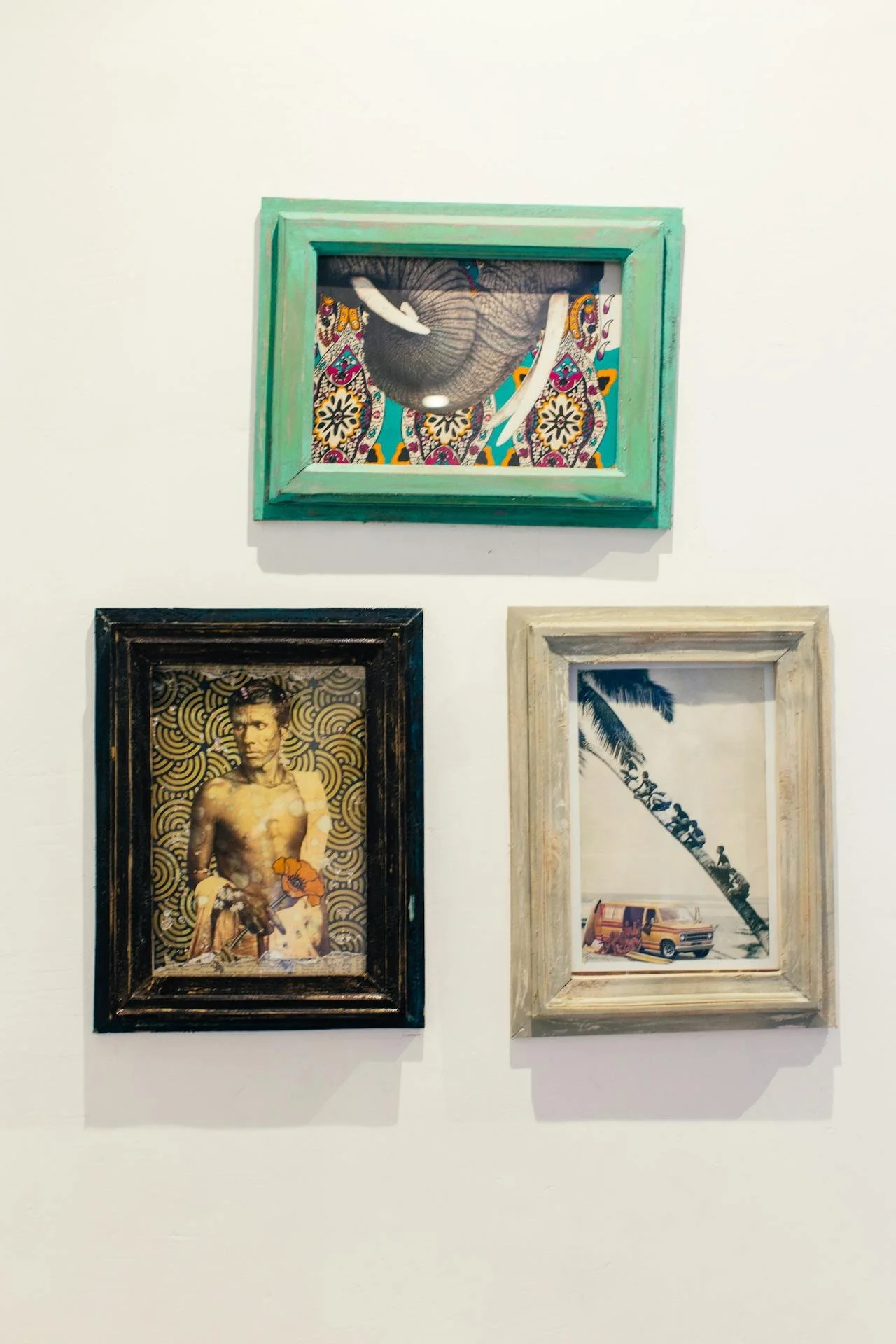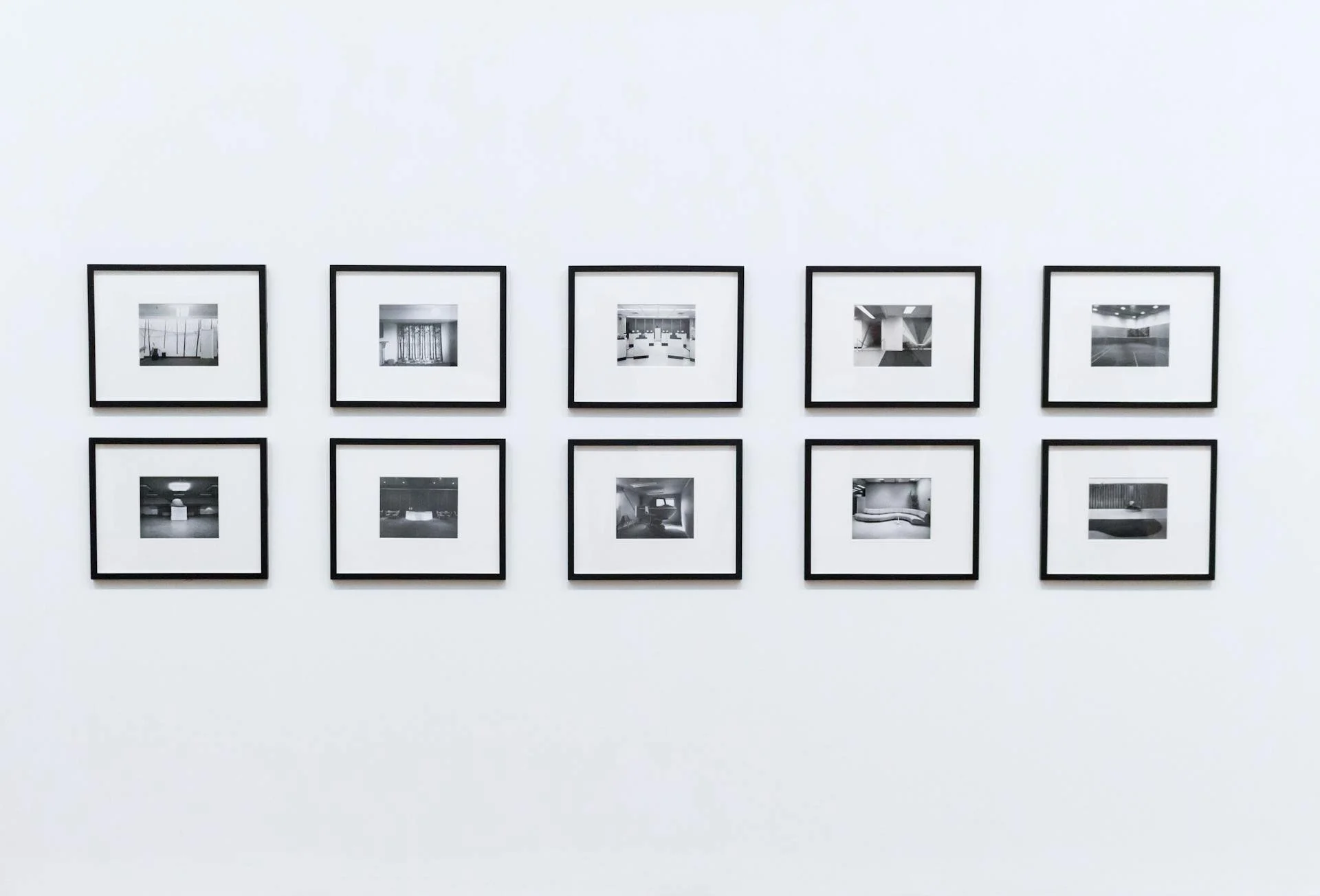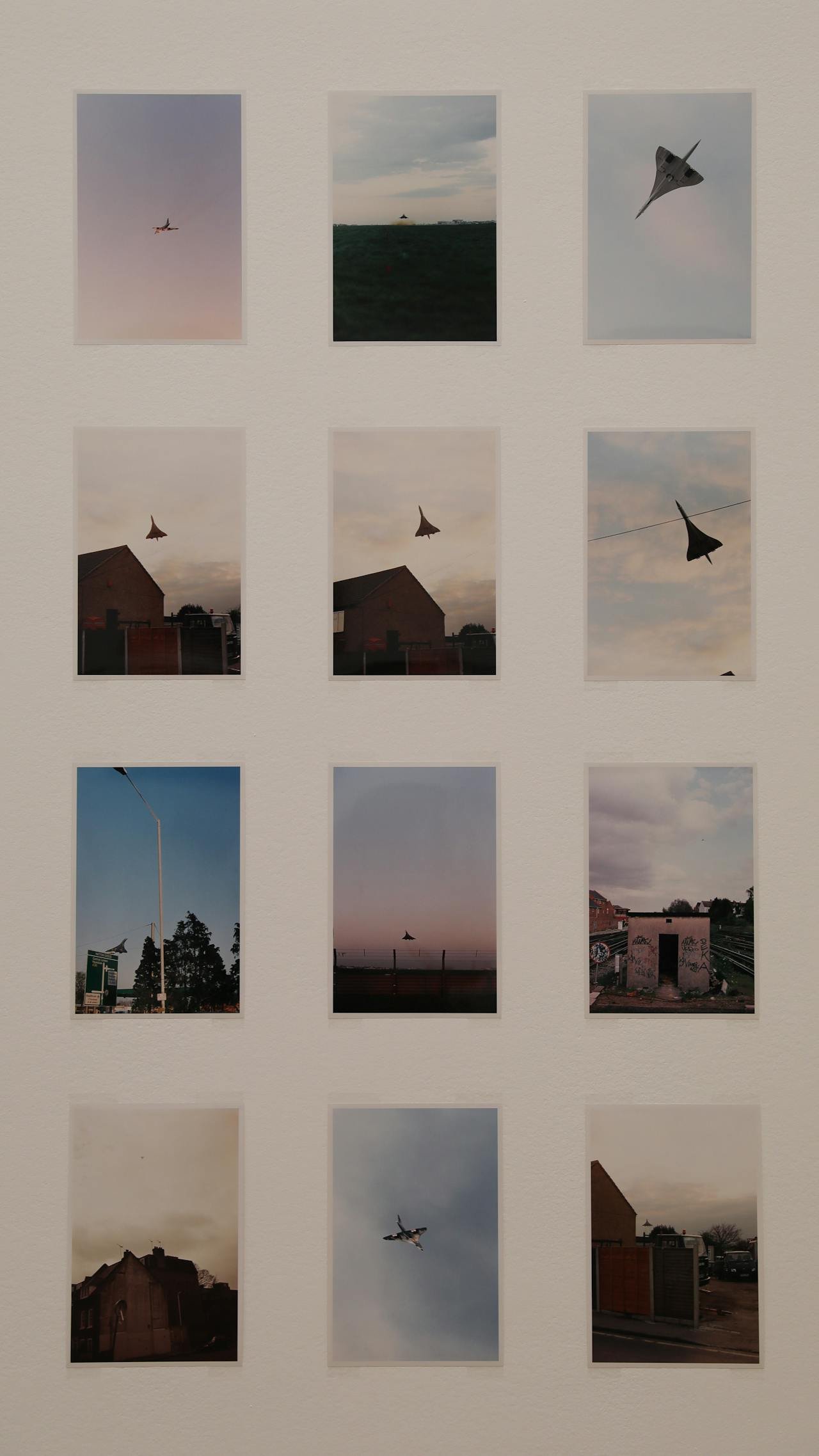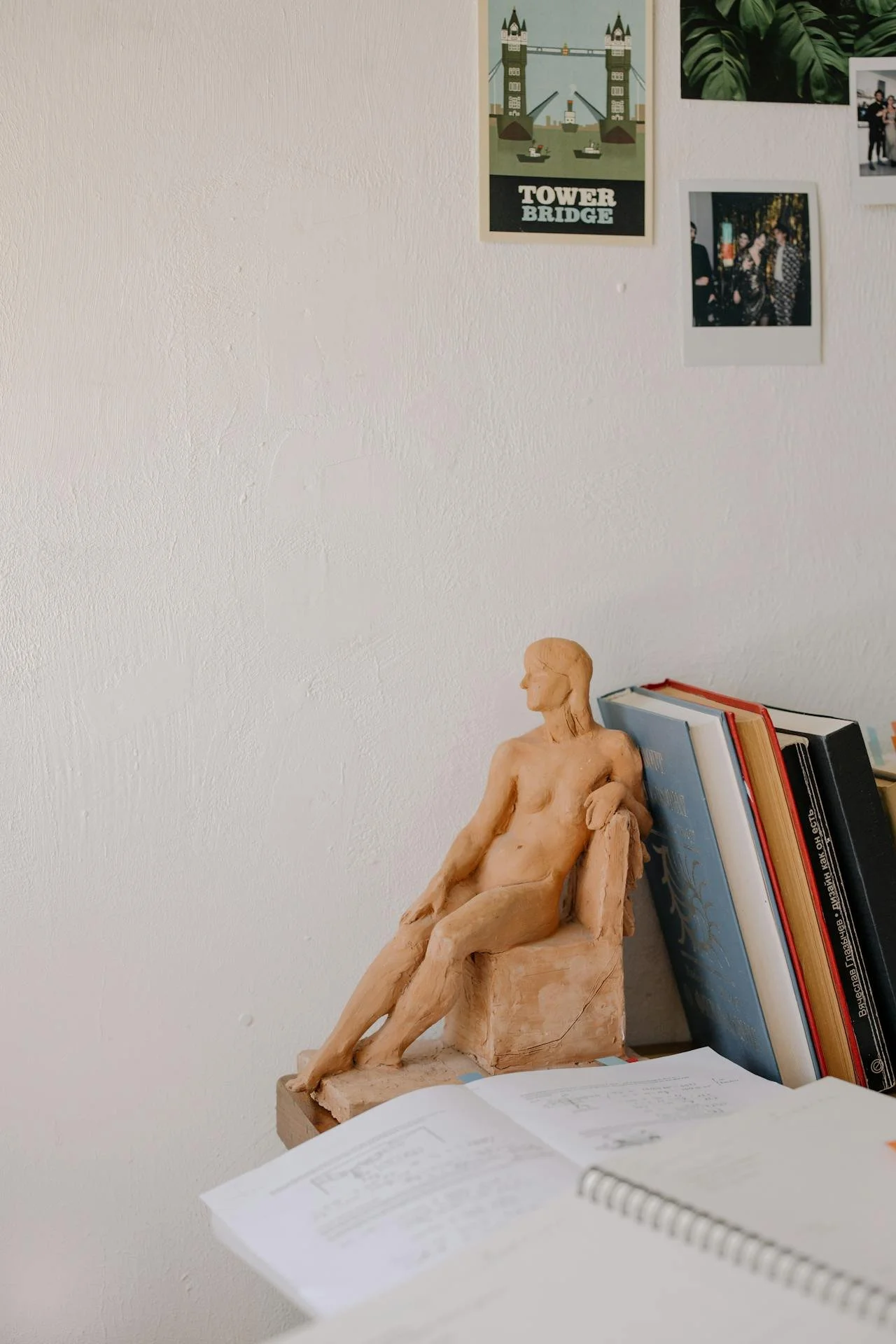Wabi-Sabi interiors: arrangements might juxtapose an uneven cluster of handmade ceramics with a simple framed print, all on a muted wall. Brutaluxe schemes (a mix of brutalism and luxury) celebrate rawness: designers “celebrate and uplift raw materials and spontaneous gestures”. This could translate into a display of weathered wood panels and beaten-metal artifacts hung amid velvet upholstery. Another fusion, Japandi-Industrial, pairs warm woods and clean lines with exposed brick, metal grilles or concrete panels – mixing organic and urban textures. Biophilic surrealism takes this further: one studio “strove for a bold aesthetic, verging on biophilic surrealism” to evoke a childlike sense of wonder. In practice, that might mean an alpine-forest mural laced with fantastical creatures and indirect plant lighting. Across all these avant-garde looks, the emphasis is on surprise, authenticity and depth.
Salon-style gallery wall: One dramatic layout style is the Salon-style gallery wall, recalling the packed exhibitions of old Paris. Designers like Ann Connelly craft walls where “things were just plopped on the wall,” achieving a look that “should…look non-structured and organic”. In a home, this might mean covering a tall hall or library wall with dozens of framed pieces, objects and small sculptures in a loose grid or montage. Lighting plays a key role – even a simple sconce can highlight a family portrait or art object, making the whole installation glow with meaning. Salon walls allow every small artifact to play off its neighbors: together they form a collage of color, subject or era. As Mallory Mathison explains, clustering art creates “an immediate story” – you get “a layered feel that a singular piece of art doesn’t always achieve”. The key is to balance variety with cohesion, perhaps through a recurring color or theme, so the ensemble feels curated rather than chaotic.
asymmetrical clusters: Beyond traditional galleries, asymmetrical clusters and mixed-media walls are in vogue. Imagine a fireplace wall where one side holds an eclectic asymmetrical pile of vintage portraits, sketches and textile panels, while the opposite side has a tall plant or ceramic vase. This contrast keeps the eye moving. Designer Ann Connelly even mixes in 3D objects: “The salon wall is now growing past two dimension,” she notes, advising to incorporate “a bas-relief… suspended from the wall, or a mirror that has a lot of carving”. For instance, a carved wood mask or metal artichoke form could sit among framed photos, adding depth. Another tactic is to build a multi-textured vertical composition: one can layer materials (patinated copper sheet, glass tiles, fabric swatches, reclaimed wood blocks) in vertical stripes or columns. Strategically placed mirror or metallic accents bounce light and heighten contrast. In fact, designers increasingly use lighting as an artistic element. Backlit LED canvases or integrated strip lights can turn a picture into a luminous art installation. As a design source observes, modern LED-enhanced art “adds depth, ambiance, and a dynamic visual experience” to interiors.
Large-scale works and murals push home design even farther. In 2024, murals were called out as redefining residential walls: as designer Korb Mistri explains, “Murals have redefined interiors… turning ordinary walls into dynamic canvases”. Bold wall murals – from geometric abstracts to lush landscapes – serve as primary focus pieces, often extending to multiple rooms or outdoor facades. Collaborating with local artists also “adds depth, history, and personal connection” to a space. For example, a living room might feature an oversized wallpaper of moonlit jungle, while a courtyard wall hosts an encaustic tile artwork – each telling a story. Even exterior garden walls can become galleries: think mosaic murals, living-art green walls, or sculptural panels. These treatments blend architecture with artwork, enhancing our outdoor experience.
Material experimentation further distinguishes cutting-edge layouts. Reflective and semi-reflective surfaces – tinted mirrors, polished metals or acrylics – can be composed into collage, fracturing and multiplying images on the wall. Reclaimed objects (old doors, scaffolding, driftwood) hung as found-art lend authenticity. One approach echoes the emerging “Industrial Chic” look: exposed brick or concrete panels paired with sleek framed prints. As IAAD designer Rachna Agarwal notes of this style, “Exposed brick, metal elements, and reclaimed wood lend a gritty, urban feel, but sleek modern finishes give sophistication”. Translating that to art walls, a collection of rusted metal plates might be arranged with glossy black frames and polished stone niches, creating a tactile, high-low composition. Even everyday objects gain gallery status: vintage mirrors, ornate religious icons, or midcentury clocks become part of the display, not just decor. The result is a richly textured wallscape that rewards close viewing.
Across these avant-garde approaches, a common principle emerges: arrangement as art. Today’s homes often feature walls that are themselves installations, not mere picture hangings. Even casual corners or stairwells can sport an off-kilter stack of items (stacked frames, leaning art, hanging lanterns) for an immersive effect. By embracing asymmetry, layering different media, and blending aesthetics, designers create spaces where every wall feels bespoke. Whether in London, Mumbai or Tokyo, the message is the same – walls should surprise and invite touch. As one trend summary puts it, interiors become “playful and unconventional” canvases where function and fantasy meet. In such homes, wall art decor is no longer an afterthought: it is central to the home’s story and atmosphere, a living, evolving collage that reflects who lives there.



